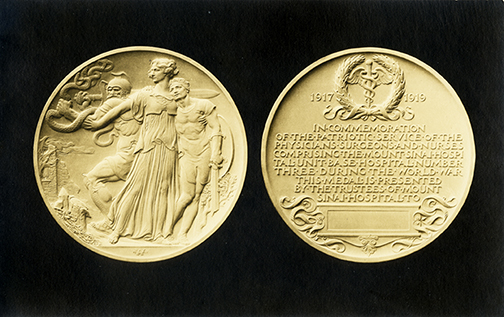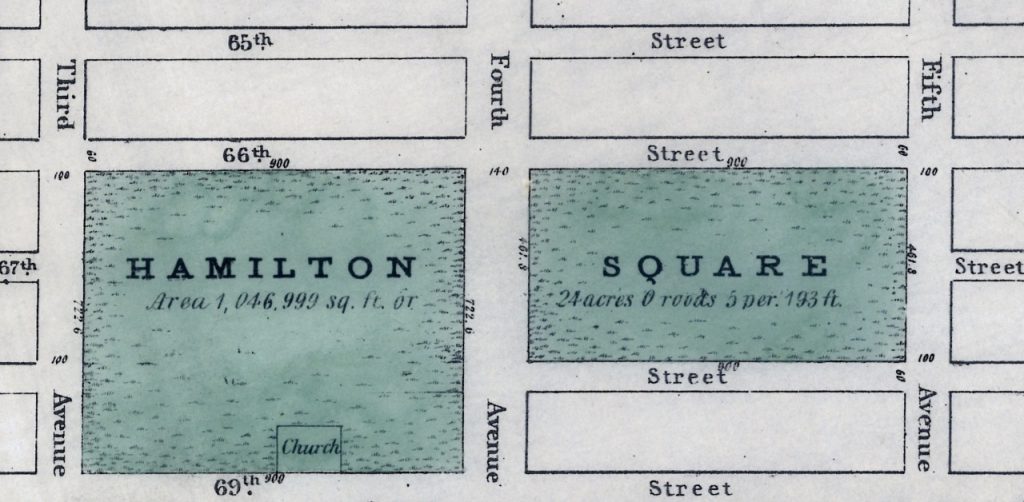Nov 24, 2020
Whenever you look back to the past, it is easy to find it all very strange, but a longer look allows us to see the threads that connect that time to this. Some of those threads are strong and enduring and others fray and end.
One of those strong threads that tie the Mount Sinai of 100 years ago to the Mount Sinai of 2020 is research and discovery. In 1920, Mount Sinai was dealing with the last wave of a deadly worldwide pandemic that had started in 1918 but still lingered. Some Mount Sinai physicians spent a great deal of time working on a “peculiar disease” that followed the epidemic. This was popularly called the ‘sleeping sickness,’ but doctors termed it epidemic encephalitis. Another Mount Sinai physician was lending his expertise as a member of a national commission that was established to deal with the ravages of empyema, which too often followed post-influenzal pneumonia. Other physicians were doing research on gastric diseases, leukemia, surgical innovations and cardiac problems – all topics that Sinai doctors continue to pursue.

Taken from 5th Ave. and 99th St. looking east over the new buildings. The building facing with the flag pole is the 1904 main building.
Another main theme from 100 years ago, as in every decade of Mount Sinai’s existence, was the physical changes being made on campus. The world war and epidemic had delayed the progress of the largest expansion plan ever envisioned by The Mount Sinai Hospital. First suggested in 1913, it was only in 1922 that all of the new buildings were completed and the renovations of older spaces finished. This resulted in a new Private Pavilion (our current Kravis Children’s Hospital), a new pediatric pavilion and pediatric clinic building, a larger employee dormitory, a larger laboratory building, and a new auditorium to accommodate Mount Sinai’s increasing educational efforts. The growth in the number of beds called for a larger house staff than before and allowed for the growth of new specialty services.
W hile these themes have echoes with our current year, as does the perennial nursing shortage of that era (among many others), there was much that was unique to Mount Sinai in 1920. In February of that year, Mount Sinai leaders held an event to celebrate the staff that had served in the World War I Mount Sinai affiliated unit, Base Hospital No. 3. Special commemorative medals were given to each veteran.
hile these themes have echoes with our current year, as does the perennial nursing shortage of that era (among many others), there was much that was unique to Mount Sinai in 1920. In February of that year, Mount Sinai leaders held an event to celebrate the staff that had served in the World War I Mount Sinai affiliated unit, Base Hospital No. 3. Special commemorative medals were given to each veteran.
The other topic of great interest in 1920 was the re-structuring of the medical staff to combine the in-patient and out-patient services under the in-patient chief of service. The Dispensary and the ward service had been two separate entities with limited overlap. The change allowed the clinic physicians to follow their patients when admitted to the hospital wards, and the ability to round and work with the in-patient staff made it more appealing to community physicians to take on clinic work. In the 1920 Annual Report, it was noted that the combined medical staff now numbered 250 physicians.
Certainly, times change. Institutions changes. Medicine changes. But even 100 years later, at Mount Sinai, some things never change.
Nov 9, 2020
I recently read a piece about Hamilton Square in the Roosevelt Island Historical Society’s From the Archives email. This park, which was named for Alexander Hamilton, existed on the Upper East Side of Manhattan from around 1807-1869. I found this fascinating since The Mount Sinai Hospital moved to Lexington Ave. and 66th St. in 1872. I knew that the City had ‘seeded’ this area with non-profit entities: Hunter College, many hospitals and schools, but I had never heard about the Square itself, which ran from 66th to 69th Streets between 3rd and 5th Avenues. Finally, Mount Sinai had a Hamilton connection, even though he died in 1804, 48 years before the Hospital was created!

Map of Hamilton Square from the New-York Historical Society
When the Square was broken up, The Mount Sinai Hospital (MSH) was located on W. 28th Street, between 7th & 8th Avenues. It had been founded in 1852 as the Jews’ Hospital in the City of New York (the name was changed in 1866) and had opened its first building in 1855. After the Civil War, the leadership realized that the facility was inadequate and the location less than ideal due to the growth of the City. On November 2, 1867 the Directors authorized the purchase of ten lots of land from 65th to 66th Street on the west side of Park (then 4th) Ave. and later added eight more lots there. But then on October 6, 1868, the City leased Mount Sinai twelve lots of land between 66th and 67th on Lexington Ave. for $1 a year for 99 years. Somehow, over the interim, the City and Mount Sinai had reached an agreement on the Hospital taking over part of the former Hamilton Square. The earlier lots were later sold, saving Mount Sinai thousands of dollars. On May 25, 1870, the cornerstone for the second MSH was laid. The President of the Hospital, Benjamin Nathan, and Mayor Oakley Hall were there. (Within two months, Nathan was murdered in his bed on a ‘dark and stormy night.’)

On May 29, 1872, a dedication ceremony was held for the new Mount Sinai Hospital. When the building opened, it had a greatly expanded capacity of 110 beds. The building was designed by the well-known architect, Griffeth Thomas, and cost $335,000 to complete. It had an operating room in the basement of the north wards, rooms for our newly created House Staff to live in, a meeting room for the Directors, and a synagogue. Lexington Ave. remained unpaved for two more years, and the Hospital never wired the facility for electricity. A telephone was installed in 1882; the number was “Thirty-Ninth St., 257”. It was at this site that Mount Sinai transformed into what we would recognize as a modern hospital, with medical education and research joining its core mission of providing patient care.
In typical Mount Sinai fashion, this facility quickly became too small. Additional buildings were built and major renovations were begun in 1882. In 1890, Mount Sinai added a building across from the Hospital on the north side of 67th St. for our nursing school and Out Patient Department. This building is the only remnant of Mount Sinai that remains there today. It later served as the home of the Neurological Institute, the Polish legation, and finally became a school for the Archdiocese of NY. The Mount Sinai Hospital moved from Lexington Ave. in 1904 to its current East Side location on 100th St., between Madison and 5th Avenues. The name of Hamilton continues on various buildings and neighborhoods of the City, making its most recent appearance on Broadway.

 hile these themes have echoes with our current year, as does the perennial nursing shortage of that era (among many others), there was much that was unique to Mount Sinai in 1920. In February of that year, Mount Sinai leaders held an event to celebrate the staff that had served in the World War I Mount Sinai affiliated unit, Base Hospital No. 3. Special commemorative medals were given to each veteran.
hile these themes have echoes with our current year, as does the perennial nursing shortage of that era (among many others), there was much that was unique to Mount Sinai in 1920. In February of that year, Mount Sinai leaders held an event to celebrate the staff that had served in the World War I Mount Sinai affiliated unit, Base Hospital No. 3. Special commemorative medals were given to each veteran.

